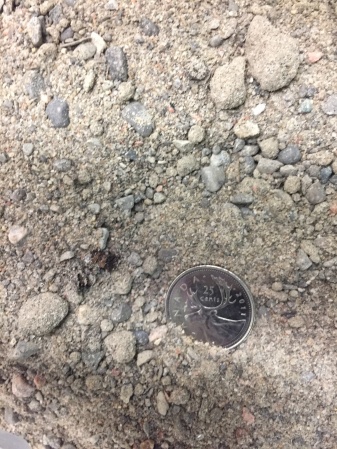Difference between revisions of "Bioretention: Filter media"
Jenny Hill (talk | contribs) |
Jenny Hill (talk | contribs) |
||
| Line 37: | Line 37: | ||
</div> | </div> | ||
<div class="col-md-12"> | <div class="col-md-12"> | ||
| + | ---- | ||
| + | <references /> | ||
Revision as of 20:14, 27 July 2017
Filter media should be obtained premixed from a vendor and meet all municipal, provincial and federal environmental standards. Mixing of sand, topsoil and compost should be done in a manner that preserves topsoil peds. The mixture should be free of stones, stumps, roots, or other debris larger than 50 mm diameter. Samples of the filter media should be dried, ground and tested to ensure they meet the following specifications:
It is recommended that the mixture comprises:
- 70-80 % coarse sand
- 10-15 % top soil
- 10-15 % organic soil amendment
Organic soil amendments
Compost is the most widely used organic component. It's use in bioretention facilities is well established and documented. Low-phosphorus composts should always be sought for use in low impact development facilities including bioretention. These are typically created from feedstocks including yard, leaf, and wood waste, and must exclude manures, biosolids, and food scraps.[1]
CITE COMPOST SPECS
Even low-phosphorous composts are known to export phosphorous over many years. The use of compost is not recommended in watersheds for which phosphorous pollution is a concern. There are three alternatives which have undergone field study, each of which has a number of benefits and potential concerns:
- Coconut coir
- Sphagnum peat
- Wood derviates
Coconut coir http://www.modularwetlands.com/new/wp-content/uploads/2015/11/2-Bioretention-Synthesis-2015-DAhearn.pdf
Sphagnum peat http://peatmoss.com/
Wood derivatives https://www.unh.edu/unhsc/sites/default/files/media/unhsc_bsm_spec_2-28-17_0.pdf
- ↑ Hurley S, Shrestha P, Cording A. Nutrient Leaching from Compost: Implications for Bioretention and Other Green Stormwater Infrastructure. J Sustain Water Built Environ. 2017;3(3):4017006. doi:10.1061/JSWBAY.0000821.
